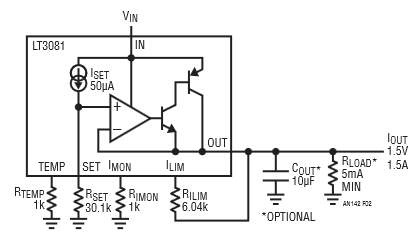Application Note 142
August 2013
Bob Dobkin
Regulators regulate but are capable of doing much more. The architecture of linear regulators has remained virtually unchanged since the introduction of the three terminal floating voltage regulator in 1976. Regulators were either a floating architecture LT317 or else an amplifier loop with feedback from the output to the amplifier. Both of these architectures suffer from limitations on versatility, regulation and accuracy.
The feedback resistors set the output voltage and attenuate the feedback signal into the amplifier. Therefore the regulation at the output is a percentage of the output voltage, so higher output voltages have worse regulation in "Volts" while the percentage may be the same. Also, the bandwidth of the regulator changes with voltage. Since the loop gain is decreased, the bandwidth is decreased as well at higher output voltages. This makes transient response slower and ripple worse as output voltage goes up.
The regulator fixes current limiting and it has no adjustment. It is built into the IC and different devices must be used for different output currents. So, if the current limit needs to be matched to the application or accurate current limit is needed, an external circuit must be used. Figure 1a shows the basic architecture of older regulators. A new architecture was introduced in 2007 in the LT3080. It used a current source for the reference and a voltage follower for the output amplifier. Two advantages of this architecture are the ability to parallel the regulators for more output current and the ability for the regulator to operate down to zero. Since the output amplifier always operates at unity gain, bandwidth is constant and regulation is constant as well. Transient response is independent of output voltage and regulation can be specified in millivolts rather than a percent of output.
Download Application Note 142 (100 Kb)

Basic Regulator Using the LT3081
